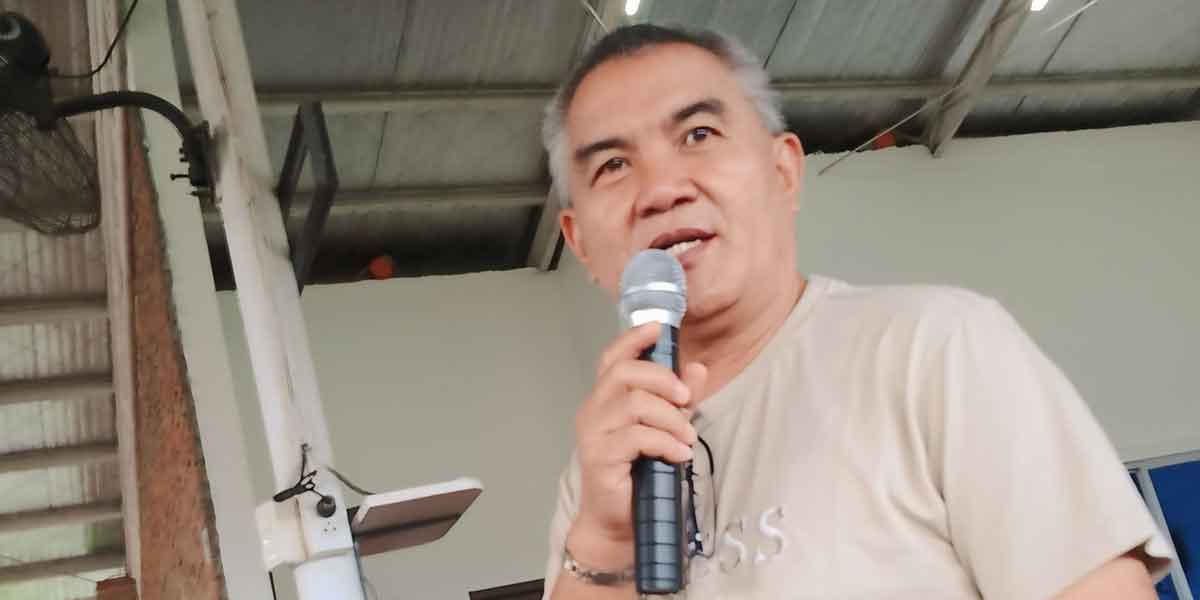By Herman M. Lagon
Tragically, 703,000 people globally die by suicide annually on average (WHO, 2021). It is more than just a statistic; it is a loud warning about a problem silently invading homes, families, and classrooms. The fact that among 15 to 29-year-olds, suicide ranks as the fourth most common cause of death should prompt every one of us to act. Every number represents a life lost; behind that statistic is a son, daughter, sibling, or friend. Still, talks about suicide are forbidden, usually whispered, or avoided completely. How did we reach the point where something this serious is not publicly discussed?
Though studies refute this, there is a common belief that talking about suicide plants the idea in someone’s head. Ignoring it simply accentuates the loneliness many people who suffer experience. It is time we go past the stigma and highlight the need to establish safe environments for these conversations, particularly in educational settings where young minds are impressionable and vulnerable.
The conditions in the Philippines are no less dismal. According to UP Population Institute (2022), 7.5% of Filipino young people between the ages of 15 and 24 have tried suicide. Nearly 1.5 million young Filipinos, yearning for a way out, were on the brink. How could our society have behaved differently? More significantly, what should we be doing right now?
Identification of the underlying causes is essential for suicide prevention. Many elements can lead to suicidal behavior: mental health problems, including depression and anxiety, family conflict, bullying, academic pressure, and financial stress. For many students, the epidemic brought still another level of complexity and aggravation of stress. Still, there is hope, even if these problems seem insurmountable. Studies have indicated that school-based initiatives can cut suicide attempts by fifty percent (Katz et al., 2013). Schools are lifelines for emotional and mental health as much as places for intellectual growth.
Save the Children (2023) reports that there were 424 student suicides in Filipino institutions alone in the 2021–2022 academic year. That is an indictment of a system failing to offer sufficient mental health care, not just a statistic. These tragedies, though, are not inevitable. Teachers and school officials can change things with the correct interventions and a proactive, sympathetic attitude.
Mental health should be integral to the educational system, not just a peripheral concern. The Philippine Mental Health Act of 2018 (RA 11036), which mandates mental health services and school interventions, marks a significant and necessary step forward. However, a significant gap remains between creating laws and their practical implementation. School officials and teachers have to be knowledgeable enough to spot early warning indicators of mental stress. For example, if a student begins withdrawing from social events or exhibits extreme behavioral changes, these could indicate more serious problems that demand attention. Still, teachers often feel unprepared to deal with such circumstances.
The vulnerability needed to be honest about suicide calls for some bravery. Here is where empathy turns from a phrase into a habit. Parents, teachers, and school administrators must create an atmosphere where it is acceptable to admit, “I am not okay.” Schools can establish a culture whereby students feel supported, seen, and heard by encouraging emotional safety.
It is about knowing how to respond, not only about spotting indicators of pain. For every person who dies by suicide, approximately 20 others attempt (WHO, 2021). That is an incredible number of people desperately seeking out help. Early intervention may literally save lives. Many times, teachers—who deal with students every day—have the ability to be first responders. One can have a great influence with a straightforward conversation, a show of concern, or even just by being present.
However, teachers are not mental health professionals, even with their best intentions. Their roles are listening, encouraging, and referring students for required assistance. Schools have to set up explicit referral systems to link at-risk students to qualified mental health experts. This is where guidance counselors, school psychologists, peer support groups, and hotlines, such as the Natasha Goulbourn Foundation Hopeline Ph, value reside. These buildings act as a safety net to make sure none of the students slip through the gaps.
Human connection is essential for suicide prevention, as building resilience in students goes beyond offering coping strategies—it is about fostering relationships rooted in trust and mutual respect. This approach holds that each person is unique and deserves compassion and understanding; when applied to mental health, it means meeting students where they are emotionally and spiritually rather than imposing solutions on them.
Furthermore, it is crucial to realize how the school environment shapes students’ mental health. A good school environment can help to buffer the demands of life. Establishing venues for honest communication, providing mental health tools, and dispelling the stigma around mental health problems can bring about long-lasting change. Research reveals that among the most successful strategies to lower suicide rates are school-based mental health initiatives (CDC, 2023).
Like many other nations, our country has a growing mental health crisis following the epidemic. Whether it is academic pressure, bullying, or family problems, the difficulties students confront now are not going away. Our response to these difficulties will, however, determine what changes. Schools have to transcend conventional roles and start shining lights of hope and encouragement for students battling mental health problems.
Preventing suicide is not the responsibility of a few; it is everyone’s. We can rewrite the story about suicide by encouraging honest dialogue, arming teachers with appropriate tools, and building an empathetic and supporting culture. Let us commit to acting as well as increasing awareness on this September 10 World Suicide Prevention Day. If we choose to listen, help, and care, there are countless more we can preserve for every life we lose.
Ultimately, small, everyday actions, not grand gestures or sweeping reforms, hold the power to prevent suicide. Sometimes, all it takes is a kind word, a compassionate ear, or simply being there. Now more than ever, let us rise to the moment and become the lifeline for those who need us most.
***
Doc H fondly describes himself as a ”student of and for life” who, like many others, aspires to a life-giving and why-driven world grounded in social justice and the pursuit of happiness. His views do not necessarily reflect those of the institutions he is employed or connected with.

























